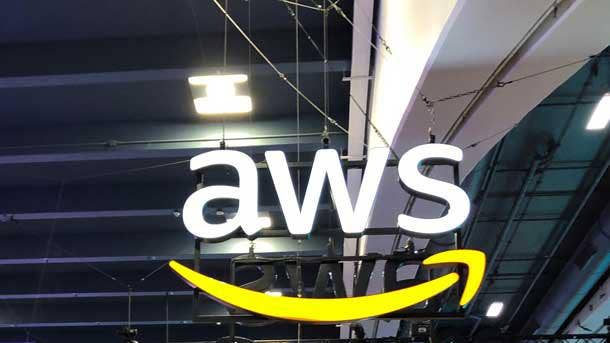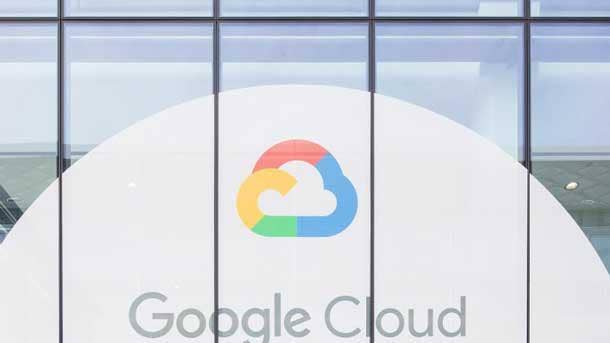6 Cloud Providers Everyone Will Be Watching In 2020
Here are 6 cloud providers everyone will have their eyes on in 2020 as they battle for dominance in the cloud computing market.

As Amazon Web Services continues its cloud computing domination into 2020, the new decade starts with anticipation of how much No. 2 Microsoft Azure can close the gap after better-than-anticipated quarterly results reports from both this month.
The battle between the two public cloud rivals also will play out in the courtroom, where AWS is challenging the U.S. Department of Defense’s award of the $10 billion JEDI cloud computing contract to Microsoft amid allegations of political interference from President Donald Trump.
Industry observers will be tracking the progress of No. 3 Google Cloud under CEO Thomas Kurian, as it continues its enterprise push and hybrid multi-cloud strategy with its Anthos platform.
Cloud computing continues to be the top spending priority among the 2,000 largest U.S. enterprises, according to a Morgan Stanley survey of CIOs in December.
Wedbush Securities analyst Daniel Ives, meanwhile, sees this year as an “inflection point year” for cloud spending that’s driven by enterprises’ multi-cloud strategies.
“We estimate that $300 billion has been spent on the cloud globally over the last four years and, looking ahead, upwards of $700 billion-plus will be spent over the next three years, which speaks to the massive cloud opportunity for Amazon, Microsoft, Google, and others (IBM),” he said.
Here’s a look at six cloud providers everyone will have their eyes on in 2020.

Alibaba Cloud
China’s Alibaba Cloud, the cloud business of e-commerce giant Alibaba Group – China’s largest internet company and Asia’s most valuable enterprise – is expanding in China and overseas.
Alibaba is in third place – behind AWS and Microsoft -- in the global cloud race with an 8 percent market share, according to Gartner, but it’s up against geopolitical challenges when it comes to establishing a meaningful presence in North America.
The 11-year-old Alibaba Cloud operates in 20 regions with 61 availability zones. In November, it posted a 64 percent increase in revenue to 9.29 billion yuan ($1.35 billion U.S.) for the second quarter and said it ended the year with rapid Asian-Pacific growth and new customers in industries including technology, fintech, retail, media, gaming and agriculture.
London-based research firm Ovum has labeled Alibaba’s expansion from its core southeast Asia market as “swift and impressive,” while noting it “still has work to do in delivering a global cloud service, because not every service is available in every region.”
Alibaba Cloud’s digital marketplace has more than 2,500 independent software vendors (ISVs) offering 3,300-plus different solutions. The cloud provider has launched its first artificial intelligence (AI) inference chip – the Hanguang 800 -- to compete with the custom AI accelerator offerings from AWS and Google Cloud.
Alibaba Cloud also is the official cloud services partner of the International Olympic Committee through 2028.

Amazon Web Services
Amazon Web Services continues to be the leader among public cloud providers, thanks to its geographic availability, number of instances and breadth of services, agility, channel partner network and an online marketplace with more than 7,200 listings from 1,500 ISVs.
Some observers have questioned slowing growth for AWS. It reported 37 percent year-over-year net sales growth to $35.026 billion in revenue for the year ended Dec. 31, 2019, compared to growth of 47 percent for 2018, when it posted $25.655 billion in revenue. But AWS CEO Andy Jassy addressed that slowing growth at AWS re:Invent 2019 conference in December, saying the cloud provider was “pretty pleased” with its growth rate.
“Sometimes you confuse yourself if you look at just the percentage year-over-year growth, because the percentage is only relevant to your base,” he said. “And when we have a business that's worth three times larger than the next largest provider, even if we're growing at a lower percentage number, when we actually go into detail, we're growing at a meaningfully larger absolute dollar rate than anybody else.”
Parent company Amazon also has said it had $29.8 billion in enterprise commitments in multi-year customer contracts for future services -- primarily for AWS -- not yet recognized in its financial statements. That’s up 54 percent year-over-year from December 2018. Those long-term commitments give AWS “some margin of safety,” according to Morgan Stanley analyst Bryan Nowak.
AWS channel partners will be watching for moves by channel chief Doug Yeum and “S-Team” member Matt Garman, newly promoted to lead the cloud provider’s demand generation team that includes sales and marketing.
Nowak noted AWS’ increased focus on hybrid/on-premises offerings with AWS Outposts and VMware partnerships, and its focus on “democratizing machine learning and solving developer pain points” with announcements at re:Invent.

Google Cloud
This year should be a key one for Google Cloud and its enterprise-focused momentum under CEO Thomas Kurian, who’s nearing the one-year anniversary of his initial pledge of an aggressive investment in Google Cloud’s sales organization and channel at last year’s Goldman Sachs Technology and Internet Conference in San Francisco.
Google Cloud plans to triple the size of its sale force in the next few years and has made a slew of executive hirings from Microsoft, Oracle, Salesforce and SAP to help build the organization, its regional sales teams and industry-centric customer approach for its enterprise push. They include former SAP cloud business group president Robert Enslin as president of global customer operations, who’s helping to overhaul the cloud provider’s sales organization.
“With Sundar Pichai now at the helm of Alphabet, there will be a major focus looking ahead on strategically where the company plans to double down, as we continue to believe a large cloud acquisition is potentially on the horizon for 2020 to boost Google’s aggressive cloud initiatives,” Wedbush’s Ives said.
Nowak also is optimistic about Google Cloud Platform based on results of a joint Morgan Stanley/AlphaWise fourth-quarter CIO survey released Jan. 15.
“GCP remains relatively nascent, but we remain optimistic that GCP’s new management team and focus will lead to faster growth over time,” he said.

IBM Cloud
IBM hopes to continue the momentum it gained in the fourth quarter and synergies from its $34 billion purchase of open source software leader Red Hat this year as it pursues share of the hybrid cloud market with a new management team in its C-suite.
When president and CEO Virginia “Ginni” Rometty steps down on April 6, Arvind Krishna, now IBM’s senior vice president for cloud and cognitive software, will become IBM’s new CEO, and Red Hat CEO James Whitehurst will take over the president’s position.
IBM surprised Wall Street this month with a forecast of higher-than-anticipated earnings growth in 2020 based on the promise of its cloud business. It posted unexpected, albeit very slight, quarterly revenue growth – its first increase after five quarters of declines – thanks to strong cloud and cognitive software performances, boosted by Red Hat its enterprise Linux operating system and OpenShift hybrid cloud platform. IBM’s total cloud revenue jumped 21 percent to a record $6.8 billion in the fourth quarter and increased 11 percent to $21.2 billion for the full year.
“The next chapter of cloud will be driven by mission-critical workloads managed in a hybrid, multi-cloud environment,” IBM chief financial officer Jim Kavanaugh said. “This will be based on a foundation of Linux, with containers and Kubernetes. As we look forward, the largest hybrid cloud opportunity is in services, advising clients on architectural choices, moving workloads, building new applications and of course managing them.”
IBM plans “aggressive” structural actions to reposition its global technology services for hybrid cloud and integrate it with its global business services offerings around “advise, build, move and manage,” according to Kavanaugh.

Microsoft Azure
Analysts have a bullish outlook this year for Microsoft’s cloud business, fresh off its surprise JEDI contract award as part of the DoD’s digital modernization strategy for the military -- a big win over perceived frontrunner AWS.
Wedbush believes while No. 1-ranked AWS clearly won the first phase of cloud spending, Microsoft Azure is poised to win the next wave and will significantly narrow the gap with AWS in the coming years. Wedbush said it’s already seeing a stronger-than-expected Microsoft Azure deal flow in the field, and Azure is experiencing an acceleration of enterprise spending for public and hybrid cloud deployments, “especially with the momentum through its all-important partner channel.”
“Redmond remains in an enviable position heading into 2020 on the heels of its cloud success, as it continues to fire on all cylinders around Office 365 and its Azure strategic vision,” Ives said. “Redmond is poised to win the majority of the next phase of cloud deployments versus the likes of Amazon. To this point, we continue to believe the ripple effect from Microsoft's landmark JEDI deal victory…will be felt for years to come on both the government and enterprise fronts, and thus indicates a seminal moment in the cloud battle between these two stalwarts.”
Microsoft’s partnerships with Oracle and VMware announced last year are seen as key moves to make Azure appeal to a larger segment of the enterprise market.

Oracle Cloud
After former co-chief executive officer Mark Hurd passed away in October, Oracle’s aggressive but late push to transition from business software developer to cloud computing is now led by a single CEO in Safra Catz.In addition to its Microsoft partnership, Oracle teamed up with VMware to allow customers to run VMware Cloud Foundation on Oracle Cloud.
The company’s cloud chief last fall said Oracle planned to hire about 2,000 more workers as part of its cloud computing services initiative and open 20 more cloud regions by the end of this year. Meanwhile, its fiscal second-quarter revenue, reported in December, came in short of analysts’ estimates.
Two key product areas will determine Oracle’s future in the cloud: cloud enterprise resource planning (ERP) applications and its Autonomous Database, chairman and chief technology officer Larry Ellison told investors on a December quarterly earnings call.
“Being the clear No. 1 in both of these two giant applications and infrastructure market segments will enable the success of our other application and infrastructure products in adjacent market segments,” Ellison said. “This is already happening in applications. We have a huge lead in Cloud ERP, with over 7,000 Fusion ERP customers and 20,000 NetSuite ERP customers.”
Oracle’s Autonomous Database, unveiled in 2017, is growing in excess of 200 percent, though off a small base, he said.
“Admittedly, it’s a relatively new product, but it’s on its way to being the most successful new product introduction in our company’s history,” Ellison said.
Oracle started the year with at least two new key hires. Former VMware channel chief Ross Brown joined as vice president of its cloud go-to-market division, and former AWS vice president of worldwide marketing Ariel Kelman was hired as its chief marketing officer.